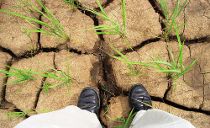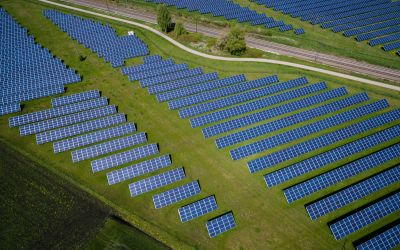10 adaptation technologies
Since climate change talks in Cancun, discussions on the need to focus on adapting to climate change have been prevalent.

Since climate change talks in Cancun, discussions on the need to focus on adapting to climate change have been prevalent.
Work by the greentech industry has been conducted concerning climate change mitigation techniques, and how to reduce carbon emissions. However, considering little was done to decrease the percentage of emissions each country has been allocated via international talks, scientists are asking governments and the greentech industry to focus their attention on adapting to climate change.
Adaptation technology has frequently been frowned upon as many believe that we should contrive to create methods to curb our emissions, not create methods to adapt countries to environmental and weather changes.
In a recent article by The Economist, they point out that the world will warm by 3.5C by 2100, if countries hit the emissions reductions targets put forth in the Copenhagen Accord. A more radical agreement is needed, but it is unlikely that this will happen, which is why adaptation methods are becoming more important.
Below are 10 technologies, introduced by Reuters, which will help governments around the world adapt to climate change over the next century. If countries pledge funds to the Green Climate Fund, which is part of the Cancun Agreement, these technologies could be created and used by some of the most vulnerable nations.
1. Innovations around infectious diseases. Hotter global temperatures will lead to the spread of more infectious diseases such as malaria, dengue, tick-borne encephalitis, and Lyme disease, according to the United Nations Framework Climate Change Convention (UNFCCC). Most of this will happen in tropical regions or regions close to tropical geographies. Higher temperatures will also lead to increases of food-born diseases like Salmonella in more developed regions. Innovations in drug delivering, drugs themselves, and prevention will be needed.
2. Flood safeguards. Property owners and farmers in vulnerable regions will increasingly look to technologies that can help them adapt to potential floods. Those could include building homes on stilts, to crafting barriers around rivers in populated regions, and using seeds and crops that are more resistant to floods.
3. Weather forecasting technologies. Extreme weather conditions, from floods to hurricanes, will become more common in certain regions because of the warming of the Earth. Weather forecasting has been an area of little innovation and will depend heavily on information technology tools (satellites, software, computing, sensors) to inject some much-needed innovation into the sector.
4. Insurance tools. To help spread the risk of extreme weather events and higher temperatures, farmers and governments in developing countries could invest in insurance programs that would pay out when weather related disasters occur. Already, insurance companies in some areas are seeing more events around flooding due to climate change. In particular, look to insurance tools that came out of the Internet industry - like WeatherBill - to find solutions.
5. More resilient crops. High temperatures can cut annual crop productivity dramatically, can lead to droughts, more rainfall, and can lead to longer or shorter crop seasons. Farmers that grow crops on risk-prone lands will be looking for seeds that can withstand higher temperatures, alternating water supplies, and fluctuating crop cycle times. Genetically modified crops could play a key role in this movement.
6. Supercomputing. Weather forecasting and climate change data will benefit immensely from more powerful and faster supercomputers that can crunch data and make important predictions in real time.
7. Water Purification. Harsher and more wide-spread droughts will lead to a strain on communities and farmers that need fresh water. At the same time, rising sea levels will affect coastal regions, potentially leading to an increase of salt in ground water. So-called desalination technology has seen an under-investment by the venture capitalist community, as VCs are unfamiliar with the markets for water technology.
8. Water Recycling. Beyond desalination, other water technologies include using gray water and harvesting rainwater, for crops and everyday human uses. The key to this type of technology is that it has to be inexpensive.
9. Efficient Irrigation Systems. While it's not cutting edge technology, farmers in affected regions will be quick to embrace irrigation systems that are much more efficient than they currently use. Packaging a product attractive to this segment could be popular.
10. Sensors. With all the potential problems and fluctuations in the environment due to global warming, there will be a growth in the need for accurate environmental data, particularly from sensors. Whether these are located in the ocean, in the atmosphere, in soil, in flood zones or in arid drought-stricken lands, organisations, governments and companies will want to track the changes in order to develop solutions to deal with the problem.
Author: Charity Knight | Climate Action
Image: IRRI IMages | flickr






